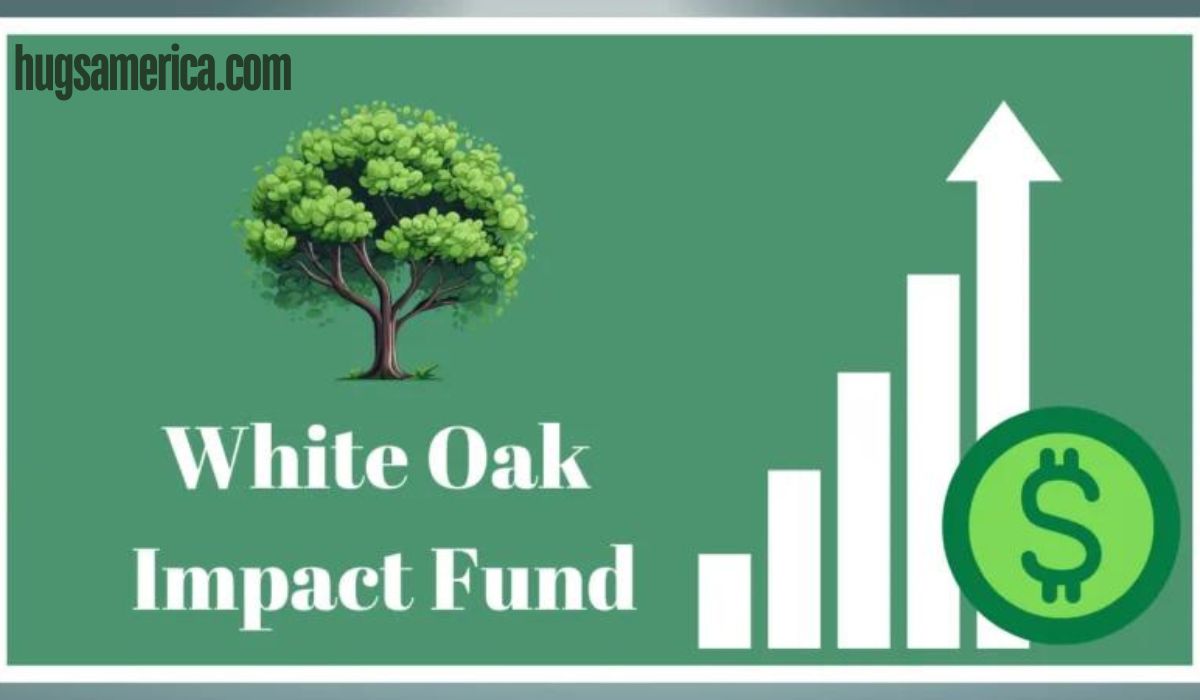Introduction to White Oak Impact Fund
The White Oak Impact Fund is a prominent player in the investment world, known for its commitment to generating positive social and environmental impacts alongside financial returns. This comprehensive guide will delve into the intricacies of the White Oak Impact Fund, exploring its origins, investment strategies, areas of focus, and how it stands out in the crowded field of impact investing. Whether you’re a seasoned investor or new to the concept, this guide aims to provide a clear and thorough understanding of what the White Oak Impact Fund is all about.
What is the White Oak Impact Fund?
The White Oak Impact Fund is an investment vehicle designed to allocate capital into projects and companies that aim to generate measurable social and environmental benefits alongside financial returns. It is part of the broader category of impact investing, which prioritizes positive impacts on society and the environment without compromising on profitability.
Key Features of White Oak Impact Fund
- Dual Focus: The fund targets both financial returns and positive societal impacts.
- Diversified Portfolio: Investments span across various sectors and geographies.
- Rigorous Impact Measurement: Uses robust metrics to assess the social and environmental outcomes of its investments.
History and Origins
The White Oak Impact Fund was established in response to the growing demand for investments that do more than just generate profit. The founders, seasoned investors with a deep understanding of global financial markets, saw an opportunity to leverage capital for greater good. They believed that finance could be a powerful tool for addressing some of the world’s most pressing challenges, such as climate change, poverty, and inequality.
Founding Principles
- Sustainability: Focus on long-term environmental and social sustainability.
- Accountability: Commitment to transparency and accountability in reporting impact.
- Innovation: Support for innovative solutions that address systemic issues.
Investment Strategy
The investment strategy of the White Oak Impact Fund is built on a blend of rigorous financial analysis and impact assessment. Here are the key components of their approach:
1. Sector Focus
The fund invests in a variety of sectors, each chosen for its potential to create significant positive impact. These sectors include:
- Renewable Energy: Investments in solar, wind, and other renewable energy projects.
- Affordable Housing: Funding for projects that provide affordable housing solutions.
- Healthcare: Investments in healthcare innovations that improve access and outcomes.
- Education: Supporting educational initiatives that enhance learning opportunities.
2. Geographic Diversification
The White Oak Impact Fund takes a global approach, investing in projects across different regions to diversify risk and maximize impact. This includes:
- Developed Markets: Investments in stable economies with robust regulatory environments.
- Emerging Markets: Targeting high-growth regions with significant social needs.
3. Impact Measurement and Management
Measuring impact is a cornerstone of the fund’s strategy. The White Oak Impact Fund employs a comprehensive framework to assess and manage the impact of its investments. This includes:
- Impact KPIs: Key Performance Indicators (KPIs) tailored to each investment’s specific impact goals.
- Regular Reporting: Frequent updates on impact performance to investors and stakeholders.
- Third-Party Audits: Independent verification of impact data to ensure accuracy and credibility.
Areas of Focus
The White Oak Impact Fund prioritizes investments in areas that align with the United Nations Sustainable Development Goals (SDGs). These areas include:
1. Climate Action
Investing in projects that mitigate climate change and promote sustainability is a top priority. This includes:
- Renewable Energy Projects: Wind farms, solar power plants, and other renewable energy sources.
- Energy Efficiency Initiatives: Technologies and solutions that reduce energy consumption and emissions.
- Sustainable Agriculture: Practices that promote soil health, reduce water usage, and enhance biodiversity.
2. Social Equity
Promoting social equity and inclusion is another key focus. The fund supports:
- Affordable Housing: Projects that provide safe and affordable housing for low-income families.
- Education: Initiatives that improve access to quality education for underserved communities.
- Healthcare: Investments in healthcare solutions that make medical services more accessible and affordable.
3. Economic Development
Fostering economic development in underserved areas is crucial for sustainable growth. The fund invests in:
- Small and Medium Enterprises (SMEs): Providing capital to SMEs that drive local economies and create jobs.
- Infrastructure Projects: Building infrastructure that supports economic growth, such as transportation and communication networks.
- Microfinance: Supporting microfinance institutions that provide financial services to those without access to traditional banking.
Impact Measurement Framework
The White Oak Impact Fund places a strong emphasis on measuring and managing the impact of its investments. Here’s how they do it:
1. Theory of Change
Each investment starts with a clear theory of change, outlining how the investment will achieve its desired impact. This includes:
- Problem Statement: Defining the social or environmental issue the investment aims to address.
- Inputs: Resources invested into the project, such as capital, expertise, and technology.
- Activities: Actions taken to implement the project, such as building infrastructure or providing services.
- Outputs: Immediate results of the investment, such as the number of homes built or patients treated.
- Outcomes: Longer-term changes resulting from the investment, such as improved health outcomes or increased renewable energy capacity.
2. Key Performance Indicators (KPIs)
For each investment, specific KPIs are established to measure progress towards the desired impact. Examples of KPIs include:
- Environmental KPIs: Reduction in greenhouse gas emissions, energy saved, water conserved.
- Social KPIs: Number of people provided with affordable housing, students educated, patients treated.
- Economic KPIs: Jobs created, SMEs funded, income levels increased.
3. Data Collection and Reporting
Regular data collection and reporting are essential to track progress and ensure accountability. This includes:
- Monthly/Quarterly Reports: Detailed updates on financial performance and impact metrics.
- Annual Impact Reports: Comprehensive reports summarizing the year’s achievements and lessons learned.
- Stakeholder Engagement: Regular communication with investors, beneficiaries, and other stakeholders to gather feedback and share results.
4. Independent Verification
To ensure the credibility of impact data, the White Oak Impact Fund employs third-party auditors to verify impact reports. This process includes:
- Data Audits: Reviewing the accuracy and reliability of impact data.
- Field Visits: On-site visits to projects to verify reported outcomes and gather additional insights.
- Stakeholder Interviews: Engaging with beneficiaries and other stakeholders to validate impact claims.
Case Studies: Real-World Examples
To illustrate the impact of the White Oak Impact Fund, let’s explore a few case studies of their investments.
Case Study 1: Renewable Energy in Sub-Saharan Africa
Project: Solar Power Plant in Kenya
Objective: Provide clean and affordable energy to underserved communities.
Impact:
- Environmental: Reduced reliance on fossil fuels, lowering carbon emissions by 20,000 tons annually.
- Social: Improved access to electricity for 50,000 households, enhancing quality of life and economic opportunities.
- Economic: Creation of 200 local jobs during construction and ongoing operations.
Case Study 2: Affordable Housing in the United States
Project: Affordable Housing Complex in Detroit
Objective: Address the housing crisis by providing affordable and safe housing options.
Impact:
- Social: 500 affordable housing units created, benefiting low-income families.
- Economic: Local economic boost through construction jobs and increased consumer spending.
- Community: Enhanced community stability and reduced homelessness rates.
Case Study 3: Healthcare in Southeast Asia
Project: Mobile Health Clinics in Indonesia
Objective: Improve access to healthcare in remote and underserved regions.
Impact:
- Health: Over 100,000 patients treated annually, with a focus on maternal and child health.
- Social: Increased healthcare access for marginalized communities, reducing health disparities.
- Economic: Training and employment for local healthcare workers, strengthening the local healthcare system.
The Importance of Transparency and Accountability
Transparency and accountability are fundamental to the success of the White Oak Impact Fund. Investors and stakeholders need to trust that their capital is being used effectively to generate the desired impacts. Here’s how the fund ensures transparency and accountability:
1. Detailed Reporting
The fund provides regular, detailed reports to investors and stakeholders, covering both financial performance and impact metrics. These reports include:
- Financial Statements: Comprehensive financial statements audited by reputable firms.
- Impact Reports: Detailed impact reports outlining the social and environmental outcomes of investments.
- Case Studies: Real-world examples showcasing the tangible benefits of the fund’s investments.
2. Stakeholder Engagement
Engaging with stakeholders is crucial for ensuring that the fund’s investments align with the needs and priorities of the communities they aim to serve. This includes:
- Community Consultations: Regular consultations with local communities to gather feedback and insights.
- Investor Meetings: Quarterly meetings with investors to discuss performance, challenges, and opportunities.
- Partnerships: Collaborating with NGOs, governments, and other organizations to enhance impact.
3. Independent Audits
To ensure the credibility of impact data and financial performance, the White Oak Impact Fund undergoes regular independent audits. These audits include:
- Financial Audits: Comprehensive reviews of financial statements by independent auditors.
- Impact Audits: Third-party verification of impact reports to ensure accuracy and reliability.
- Compliance Audits: Ensuring compliance with relevant regulations and standards.
How to Invest in the White Oak Impact Fund
If you’re interested in investing in the White Oak Impact Fund, here are the steps you need to follow:
1. Research and Due Diligence
Before investing, it’s crucial to conduct thorough research and due diligence. This includes:
- Understanding the Fund’s Strategy: Familiarize yourself with the fund’s investment strategy, areas of focus, and impact measurement framework.
- Reviewing Performance: Analyze the fund’s historical financial performance and impact reports.
- Consulting Experts: Seek advice from financial advisors and impact investing experts to make an informed decision.
2. Contact the Fund
Once you’ve completed your research, contact the White Oak Impact Fund to express your interest in investing. This typically involves:
- Initial Inquiry: Reaching out to the fund’s investor relations team to request more information.
- Application Process: Completing the necessary application forms and providing required documentation.
- Due Diligence: Undergoing a due diligence process to assess your suitability as an investor.
3. Investment Agreement
If your application is approved, you’ll need to sign an investment agreement outlining the terms and conditions of your investment. This includes:
- Investment Amount: Specifying the amount of capital you wish to invest.
- Investment Period: Defining the duration of your investment and any lock-in periods.
- Fees and Charges: Understanding any fees or charges associated with the investment.
4. Ongoing Monitoring and Engagement
After making your investment, it’s important to stay engaged and monitor the performance of the fund. This includes:
- Regular Updates: Reviewing the fund’s financial and impact reports to track performance.
- Investor Meetings: Participating in investor meetings and consultations to stay informed about developments.
- Feedback: Providing feedback to the fund’s management team to help improve performance and impact.
Conclusion
The White Oak Impact Fund represents a powerful approach to investing, combining the pursuit of financial returns with a commitment to generating positive social and environmental impacts. By prioritizing sustainability, transparency, and accountability, the fund has established itself as a leader in the impact investing space. Whether you’re an experienced investor or new to the concept, the White Oak Impact Fund offers a compelling opportunity to make a difference while achieving your financial goals.
Investing in the White Oak Impact Fund is not just about generating returns; it’s about contributing to a better world. By aligning your capital with your values, you can play a part in addressing some of the most pressing challenges of our time. So, if you’re ready to make an impact, consider the White Oak Impact Fund as your partner in this journey.
FAQS
FAQs About the White Oak Impact Fund
1. What is the White Oak Impact Fund?
The White Oak Impact Fund is an investment fund that aims to generate positive social and environmental impacts alongside financial returns. It invests in various sectors, including renewable energy, affordable housing, healthcare, and education, with a focus on sustainability and accountability.
2. How does the White Oak Impact Fund measure its impact?
The White Oak Impact Fund uses a comprehensive impact measurement framework. This includes setting Key Performance Indicators (KPIs) for each investment, regular data collection and reporting, and independent third-party audits to ensure accuracy and credibility. Impact is measured across environmental, social, and economic dimensions.
3. What sectors does the White Oak Impact Fund invest in?
The White Oak Impact Fund invests in a variety of sectors that have the potential to create significant positive impacts. These sectors include renewable energy, affordable housing, healthcare, education, and economic development initiatives. The fund focuses on projects that align with the United Nations Sustainable Development Goals (SDGs).
4. How can I invest in the White Oak Impact Fund?
To invest in the White Oak Impact Fund, you need to conduct thorough research and due diligence, contact the fund to express your interest, complete the necessary application forms, and undergo a due diligence process. If approved, you will sign an investment agreement outlining the terms and conditions of your investment. Ongoing engagement and monitoring of the fund’s performance are also recommended.
5. What makes the White Oak Impact Fund different from other investment funds?
The White Oak Impact Fund stands out for its dual focus on financial returns and positive societal impacts. It prioritizes sustainability, transparency, and accountability, with rigorous impact measurement and reporting practices. The fund also engages in diverse sectors and geographies, ensuring a broad and meaningful impact on global challenges.










